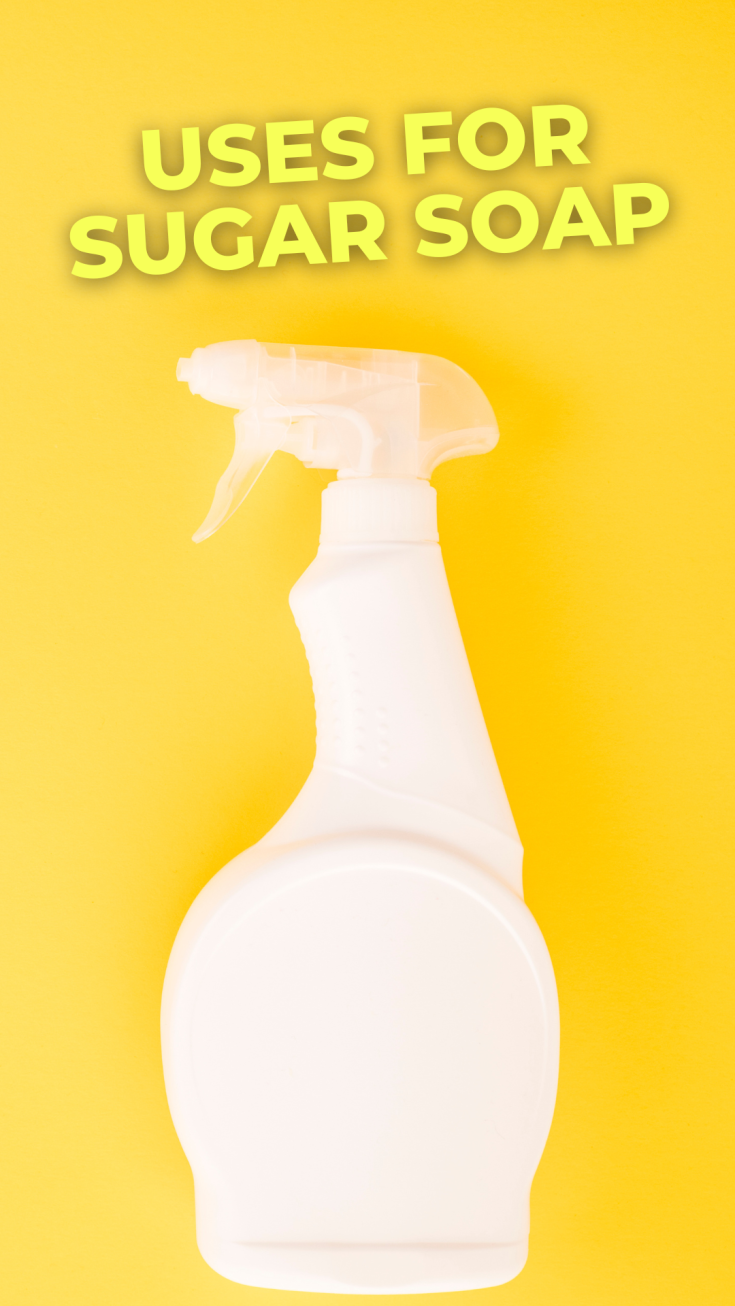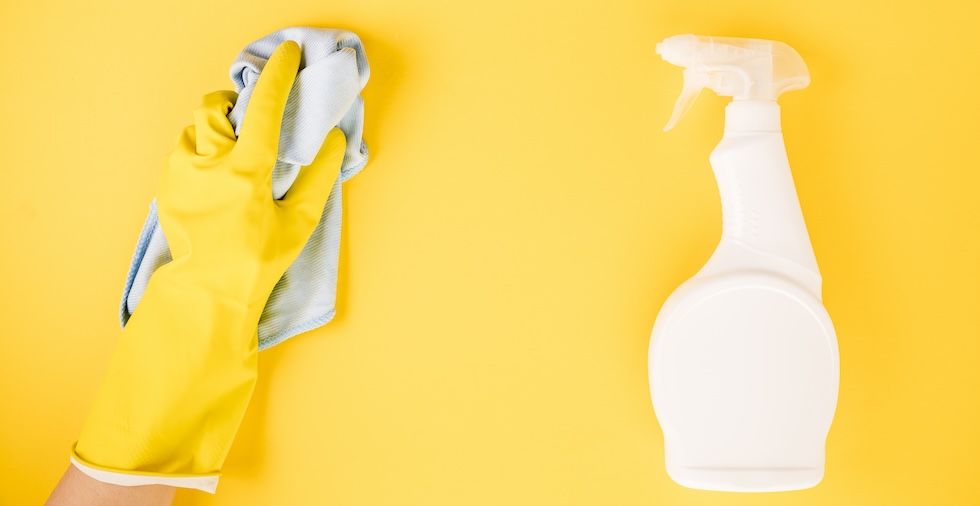- Understanding sugar soap
- Sugar soap uses
- Can you use sugar soap on wood?
- Do you have to rinse off sugar soap?
When it comes to household cleaning, few products have garnered as much acclaim and reverence as sugar soap. The product's remarkable ability to easily cut through grease, grime, and dirt has made it a staple in many homes. But what exactly is sugar soap, and how can it be used to tackle various cleaning tasks?
In this detailed guide, we'll explore the world of sugar soap, its uses, benefits, and essential tips for achieving optimal results. Read on to learn everything you need to know about using sugar soap in your everyday life.
Understanding sugar soap
First, let’s talk about what this is. Sugar soap is a powerful cleaning solution composed of water, sodium carbonate, and sodium phosphate.
This unique combination creates a potent cleaner that removes stubborn stains and dirt from surfaces. But what sets sugar soap apart from other cleaning products on the market?
Unlike many conventional cleaners, sugar soap doesn't rely on harsh chemicals or abrasive ingredients for its cleaning power. Instead, it works through a process known as saponification, where the alkaline properties of the sodium carbonate react with fatty acids in dirt and grease, turning them into soap molecules that can be easily rinsed away.
Sugar soap uses
Now that we have a better understanding of what sugar soap is, let's explore some of its most common uses in greater detail:
1. Wall cleaning
One of the primary uses of sugar soap is cleaning walls, particularly before painting. Over time, walls can accumulate dirt, grease, and other surface contaminants that can interfere with paint adhesion and spoil the finish. Sugar soap provides a thorough and effective solution for removing these impurities, ensuring a clean and smooth surface for painting.
To clean walls with sugar soap, dilute the solution according to the manufacturer's instructions. Then, apply it to the wall using a sponge or cloth, working in small sections to ensure thorough coverage. Allow the solution to sit for a few minutes to loosen dirt and grime, then rinse thoroughly with clean water and allow the wall to dry before painting.
2. Wood cleaning
Contrary to popular belief, sugar soap can also be used on wood surfaces. However, it's essential to exercise caution and test the solution on a small, inconspicuous area first to ensure compatibility with the wood finish. Some wood finishes may be sensitive to alkaline cleaners like sugar soap, so proceeding with care is crucial.
To clean wood with sugar soap, dilute the solution and apply it to the surface using a soft cloth or sponge. Gently scrub the wood, careful not to oversaturate it, then rinse thoroughly with clean water and dry with a soft towel. This process can help remove dirt, grease, and grime from wood surfaces, restoring their natural beauty and lustre.
For more wood cleaning tips, check out our DIY natural wood polish.
3. Stain removal
Whether you're cleaning floors, walls or countertops, sugar soap is an excellent choice for removing stubborn stains. Its powerful cleaning action can penetrate porous surfaces, quickly lifting and dissolving even the toughest stains. From food spills to grease marks, sugar soap can help restore surfaces to their original pristine condition.
To tackle stains with sugar soap, apply the solution directly to the affected area and allow it to sit for a few minutes to penetrate the stain. Then, gently scrub the area with a soft brush or sponge, working in a circular motion to loosen the stain. Rinse thoroughly with clean water and repeat the process until the stain is entirely removed.
4. Mould removal
Mould and mildew can be a common problem in damp or poorly ventilated home areas, such as bathrooms and kitchens. Fortunately, sugar soap offers an effective solution for tackling mould growth and preventing it from spreading further. Its antifungal properties make it ideal for killing mould spores and removing unsightly mould stains from surfaces.
To remove mould with sugar soap, dilute the solution as directed and apply it to the affected area using a spray bottle or sponge. Allow the solution to penetrate the mould for a few minutes, then scrub the area gently to loosen the mould growth. Rinse thoroughly with clean water and dry the area to prevent mould from returning.
5. Pre-painting preparation
Preparing the surfaces properly before embarking on a painting project is essential to ensure a flawless finish. Sugar soap is an invaluable tool for pre-painting preparation, as it effectively removes dirt, grease, and other surface contaminants that can interfere with paint adhesion.
To prepare surfaces for painting with sugar soap, dilute the solution as directed and apply it to the surface using a sponge or cloth. Work in small sections, scrubbing gently to loosen dirt and grime, then rinse thoroughly with clean water and allow the surface to dry completely before painting. This process will help ensure a smooth and durable paint finish that will stand the test of time.
6. General cleaning
In addition to its specialised uses, sugar soap is also an excellent choice for general cleaning tasks around the home. Its powerful cleaning action can tackle a wide range of surfaces and materials, leaving them clean and refreshed, from kitchen cabinets to bathroom tiles.
To use sugar soap for general cleaning, dilute the solution as directed and apply it to the surface using a sponge or cloth. Scrub gently to loosen dirt and grime, then rinse thoroughly with clean water and dry with a soft towel. This process can help maintain cleanliness and hygiene throughout the home, ensuring that surfaces remain sparkling clean and free from dirt and germs.
Can you use sugar soap on wood?
As mentioned earlier, sugar soap can indeed be used on wood surfaces. However, it's essential to proceed cautiously and test it on a small, inconspicuous area first to ensure compatibility with the wood finish. Some wood finishes may be sensitive to alkaline cleaners like sugar soap, so it's crucial to exercise care and follow the manufacturer's instructions carefully.
To use sugar soap on wood, dilute the solution as directed and apply it to the surface using a soft cloth or sponge. Gently scrub the wood, careful not to oversaturate it, then rinse thoroughly with clean water and dry with a soft towel. This process can help remove dirt, grease, and grime from wood surfaces, restoring their natural beauty and lustre without causing damage.
Do you have to rinse off sugar soap?
Yes, it's essential to rinse off sugar soap after cleaning to remove any residue and prevent potential issues. Failure to rinse thoroughly could result in a sticky film or residue buildup, attracting dirt and grime over time. To ensure optimal results, rinse the cleaned surface with clean water and dry thoroughly with a soft cloth or towel.
In conclusion, sugar soap is a versatile and powerful cleaning agent offering many uses and benefits. Whether preparing to paint your walls, tackling stubborn stains, or simply maintaining cleanliness around the home, sugar soap is sure to become an invaluable tool in your cleaning arsenal. Remember to test it on a small area first, rinse thoroughly after use, and enjoy the sparkling results!
So, why wait? Harness the power of sugar soap and unlock a world of clean possibilities today! Whether scrubbing walls, removing stains, or preparing surfaces for painting, sugar soap delivers exceptional results, leaving your home fresh and rejuvenated.
Q&A
Looking for some more answers? Take a look at our FAQs about sugar soap uses below:
Can I use washing-up liquid instead of sugar soap?
The answer depends on the job you are doing. While washing-up liquid can be used in various household cleaning projects, it is not as powerful as sugar soap. Therefore, you should consider the type of cleaning you want to do before you start.
Can I make my own sugar soap?
While you can buy sugar soap commercially, you may also want to make it at home. To do so, you must combine sugar, vinegar, detergent, an essential oil, and hot water. There are many different recipes online — choose one that suits your needs.
Does sugar soap remove mould?
While sugar soap does help you remove mould externally, it may not address the root of the problem. You can use it to wipe off mould on areas such as walls and ceilings. It's important to also look for the reason you have mould in your home. You should deal with the problem head-on to prevent further mould from appearing.
Have you used sugar soap before? Let us know in the comments below!


Leave a Reply